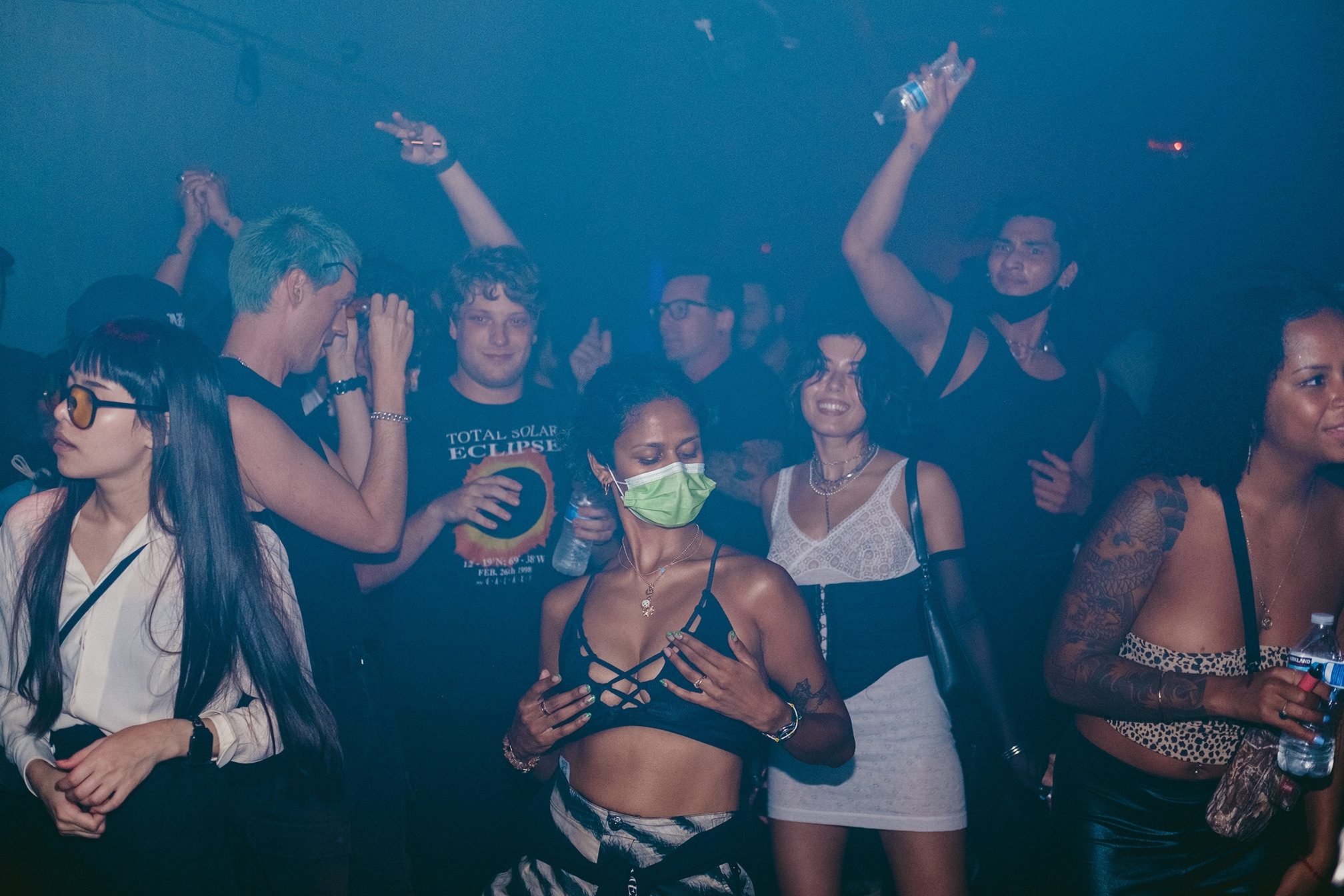 Features
Features
Wild Wild West: After the pandemic, LA's rave underground bounces back stronger than ever
A new era of the rave underground - led by femme and queer POC DJs and collectives – is popping off in Los Angeles. Star Eyes and Bianca Oblivion of the Warp Mode crew clue us in
It started in early summer 2021, with renegade punk raves under bridges and in parking lots, wild 200 BPM hardcore playing while partiers from 15 to 50 ripped nitrous balloons and flipped off police helicopters. You'd start the afternoon at a gully Concrete Jungle free jungle party in the graffiti yards or Elysian Park, hit a sound installation at Canary Gallery or a queer party at The Lash, and eventually end up sweating it out at a bunch of off-the-radar spaces known by mystical names like Ceres, The Yard, Gladys and Vertexx. Even as the summer heat burned off and notorious punks skipped town, it became apparent that the scene was holding — something different was going on in Los Angeles, an exciting sea change swelling like a wave from underground.
The renegade rave spirit is back in effect but with a huge vibe shift. Parties no longer live or die on a constant stream of international headliners. Instead, thoughtfully curated local and statewide guests are moving the needle, with greater racial and gender diversity in line-ups and among partygoers as well. Sure, there's a lot of '90s nostalgia and revivalism going around, but there's a ton of new music being played by producers from North, South and Latin America – really exciting sounds in the realms of bass, hardcore, jungle, and breaks and electro, fusing with the influence of reggaeton, perreo, baile funk, amapiano, and beyond.
In 2018, pre-pandemic, parties like this in Los Angeles were few and far between. The scene was dominated by celebrity and influencer-driven events, house and disco clubs, and serious techno all-nighters. But now there are numerous flourishing DJs and promotion crews in the bass-driven underground, legacy parties are expanding the palette of their bookings, and fresh new events – many of them run by femmes and queer POC – are putting on for the cutting-edge of club music in North America and beyond.
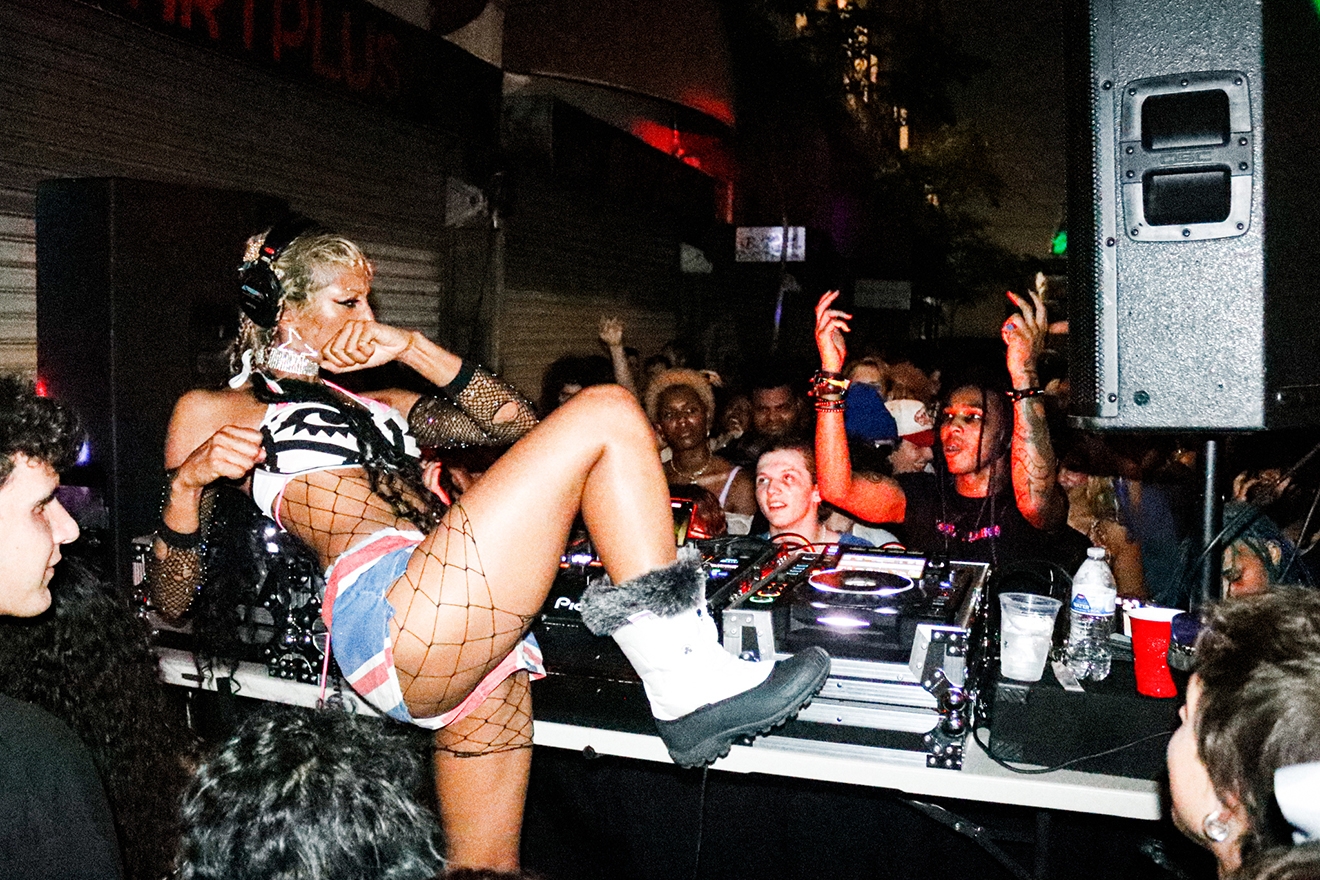
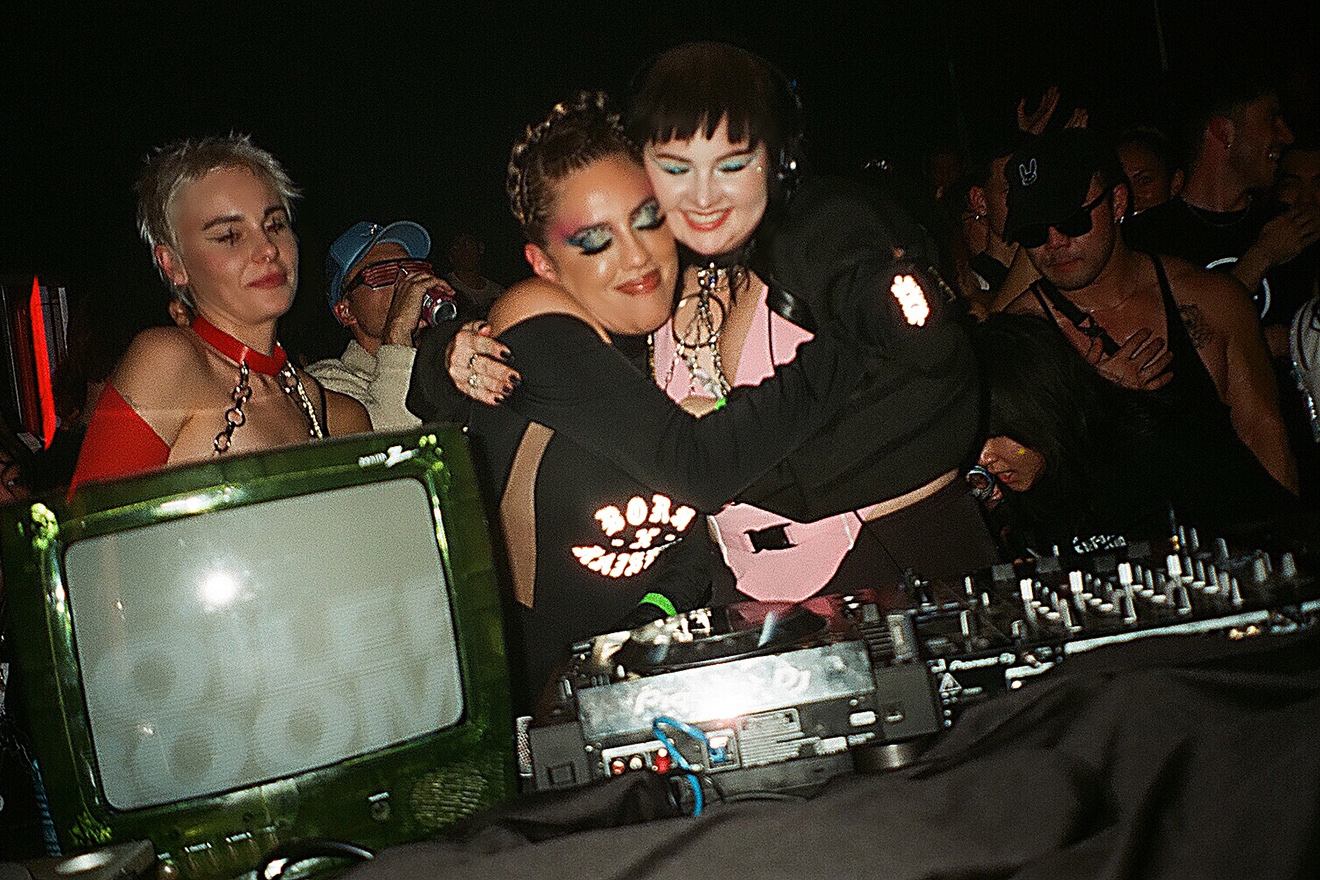
To be clear, LA has always been about the underground, but somehow this gets lost when our image is exported to the rest of the world. We're out here about to fall into the sea, raving ‘til the sun comes up in grimy warehouses and innovating new music strains in dusty fabrication warehouses, auto body shops, and abandoned fashion stores in the industrial backsides of the city. Yet all most people see of Southern California is yoga and green juice, mellow disco and house, and rich white kids who live by the beach; guns, gangsters, Hollywood hype and huge EDM festivals.
True Angelenos know that bass, breakbeat and the harder side of the spectrum – particularly hardcore/gabber, hard house and jungle/drum 'n' bass – has had a huge foothold in the city since the early '90s, as the UK rave scene hugely influenced the vibe and the bookings of party organizations like Double Hit Mickey, No-Doz, Fry For Five and Organic — outfits that would lay the groundwork for the giant EDM festivals and concerts like Coachella that have become synonymous with Southern California. In the early '90s, Los Angeles already had huge raves (then called "massives"), world-class record stores, and well-organized, big business dance music events before much of the globe. The cartoonish, over-the-top aesthetic of those early days still influences what goes on today, vibe-wise and musically; and not surprisingly, the promoters and DJs of yesteryear are now the ones running local soundsystems, booking agencies and management companies, and even multi-million dollar dance music brands.
Read this next: This is what American parties looked like before EDM
For the last decade or so, EDM has dominated the Southern California landscape, mobilizing a captive audience of millions of teens and 20-somethings for whom festivals like EDC, Hard and Coachella are their first exposure to dance music. This hasn't been all bad – there's a trickle-down effect from ravers who start at EDM festivals and eventually get more into underground artists – but it has made it difficult for DJs and promoters who aren't a part of this carefully-plotted system to gain a foothold. For all the devastating things the COVID-19 pandemic did to dance music, in Los Angeles it created some fresh air – some space to do things differently and a crowd willing to test the limits too.
The "pandemic break" created a rift in time and taste. Fans of electronic music and parties were forced to experience the culture in the only way you could at the time – via DJ streams, internet radio and virtual events. Without the pressure of paying $50 or $150 to attend an event – watching DJs from far away on stages, carefully planning around set times – engaging with different music styles and DJs became as easy as changing the channel. People became more open to new sounds and ideas, new ways of mixing and new rave sensibilities. It decentralized age, sex, location, genre – the platonic ideal of cyberpunk.
Once lockdown was lifted, those who had recently come of age were raging to party but didn't have any particular loyalties to certain promoters or music genres. The same could be said for the thousands of people who moved to LA in the past couple years. “I moved here from New York during the pandemic, and I noticed there’s a well-loved feeling at the parties in Los Angeles,” says Morgan "Momo" Zakarin, a photographer and hairdresser who can be seen on the dancefloor nearly every weekend. “I feel like the LA scene is super committed. The people of this scene know raves are safe spaces for young people to explore their internal lives and feel into and intuit with others – in other words, they are absolutely essential.”
Read this next: How the pandemic connected China's club scene
The '90s scene was extremely male-dominated and had a super aggressive edge beneath all the PLUR – it was common for promoters to call the cops on each others' parties, DJs were often at battle, and theft and violence could sometimes be rampant at events. Our corner of the underground has taken to heart the discussions of how dance music culture could be changed for the better. There is more femme/queer representation and recognition behind the decks and behind the scenes. There's more building community, sharing resources, looking out for one another, working together; more drug awareness, information, and testing. Less snobbery and gatekeeping. Overall, there is more intentionality in the rave spaces that people around us are creating – more thought being put into how parties are promoted, door policy, how tickets are sold and priced… Just how does the actual vibe get curated?
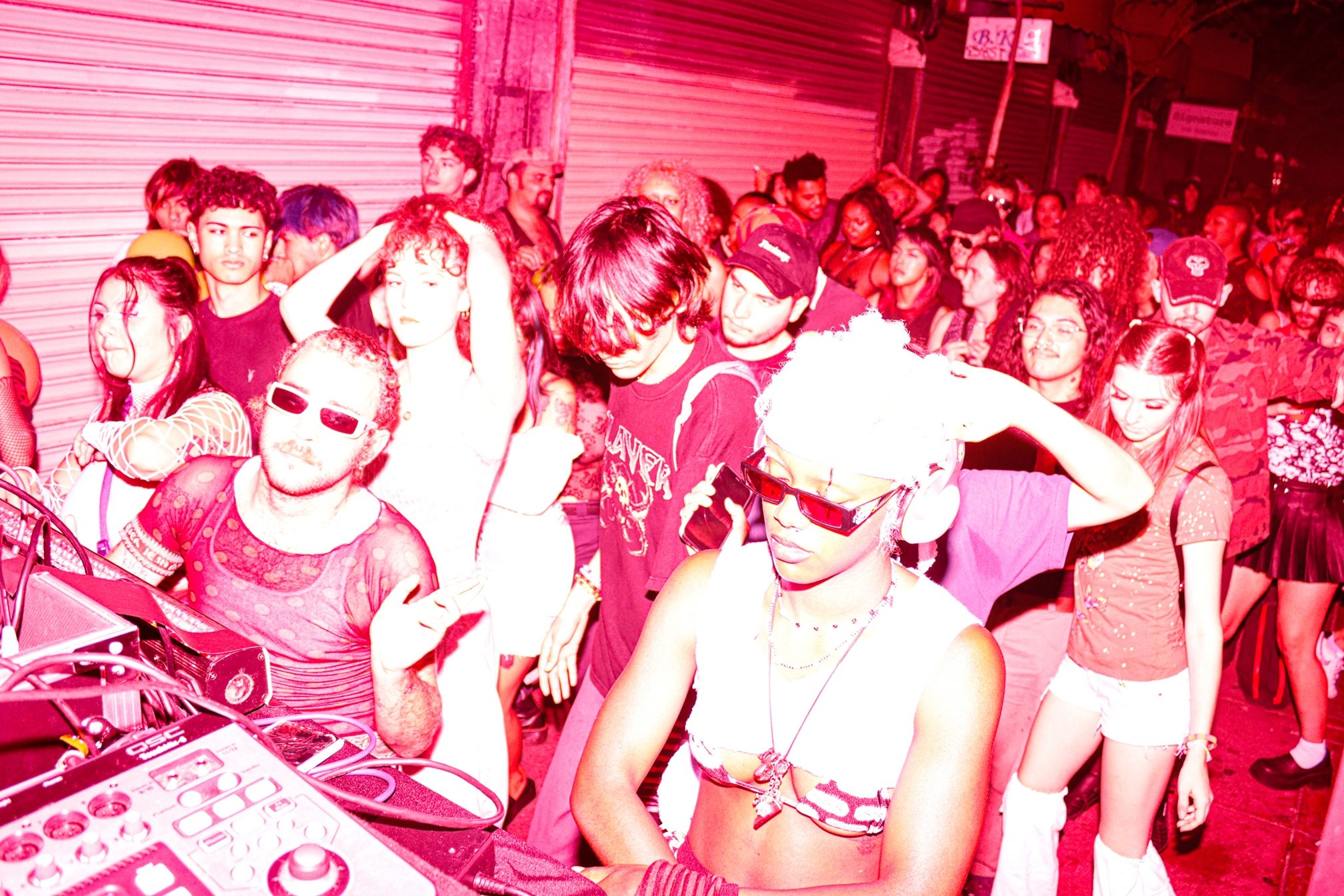
Sam XL of Pure Filth Sound has seen it all, from running record labels, DJing and promoting his own parties, managing the Beat Non Stop record store on Melrose in the late '90s, and curating Coachella stages. Since buying his first soundsystem in 1992, he's provided the low-end thump for everyone from Doc Martin's Earth to Sea afterhours to Low End Theory, Dub Club and Ham on Everything. Most weekends, you can still find Sam presiding over giant speaker stacks at warehouse parties all over town – at nearly seven feet tall, he's hard to miss. With over 30 years in the underground, Sam senses a fresh vibe afoot in the City of Angels post-pandemic.
“One of the most exciting things in LA right now is the LGBTQ+ community coming together and throwing underground shows and taking it back to what was originally started by them,” Sam says. “The energy at the shows is super PLUR and the DJs are killing it! Also it is great to see and hear so many female DJs shining – divine feminine rave energy is awesome. I also like that today's ravers are up for whatever; they’re not big genre snobs like previous generations. And promoters are taking chances and doing renegade parties all over in interesting places. Just when I thought I’d seen it all in 30 years, someone will surprise me!"
I (Star Eyes) have known Sam since I was a teenager from the drum 'n' bass scene. We reconnected when we needed some big speaker stacks for Warp Mode, the party series created by myself, Bianca Oblivion, and Aussie transplant AK Sports. After DJing and throwing parties (Trouble & Bass, Chaos Clan) in New York City for 15 years, I moved back to my birthplace of Los Angeles in early 2021 and reconnected with Bianca, who operates the Club Aerobics label and NTS Radio show. Having spent years at the crossroads of bass and breaks, grime, Bmore/Jersey club, ballroom, 140, UKG, breakbeat hardcore, and jungle – and frankly, having few places to play that sound in Los Angeles – the time seemed right to combine forces and create a spot for our favorite sounds. We formed Warp Mode in summer 2021, pouring blood, sweat, money, and hours of planning into parties in warehouses, empty Skid Row loft apartments, and repurposed storefronts turned galleries, with DJ guests representing the intersection of US & UK bass and club music like Madam X, TSVI, Anna Morgan, and Introspekt (who was recently named a Mixmag one to watch in 2023). Along the way we've thrown events with Boiler Room and Keep Hush, and collaborated with fellow low-end lovers Worst Behavior (helmed by Anna Morgan and Bell Curve) and local crew Jetlag – a multi-racial, multi-generational crew made up of Beijing Junglist, Junja, Yunna and DJ-about-town Dara Genesis.
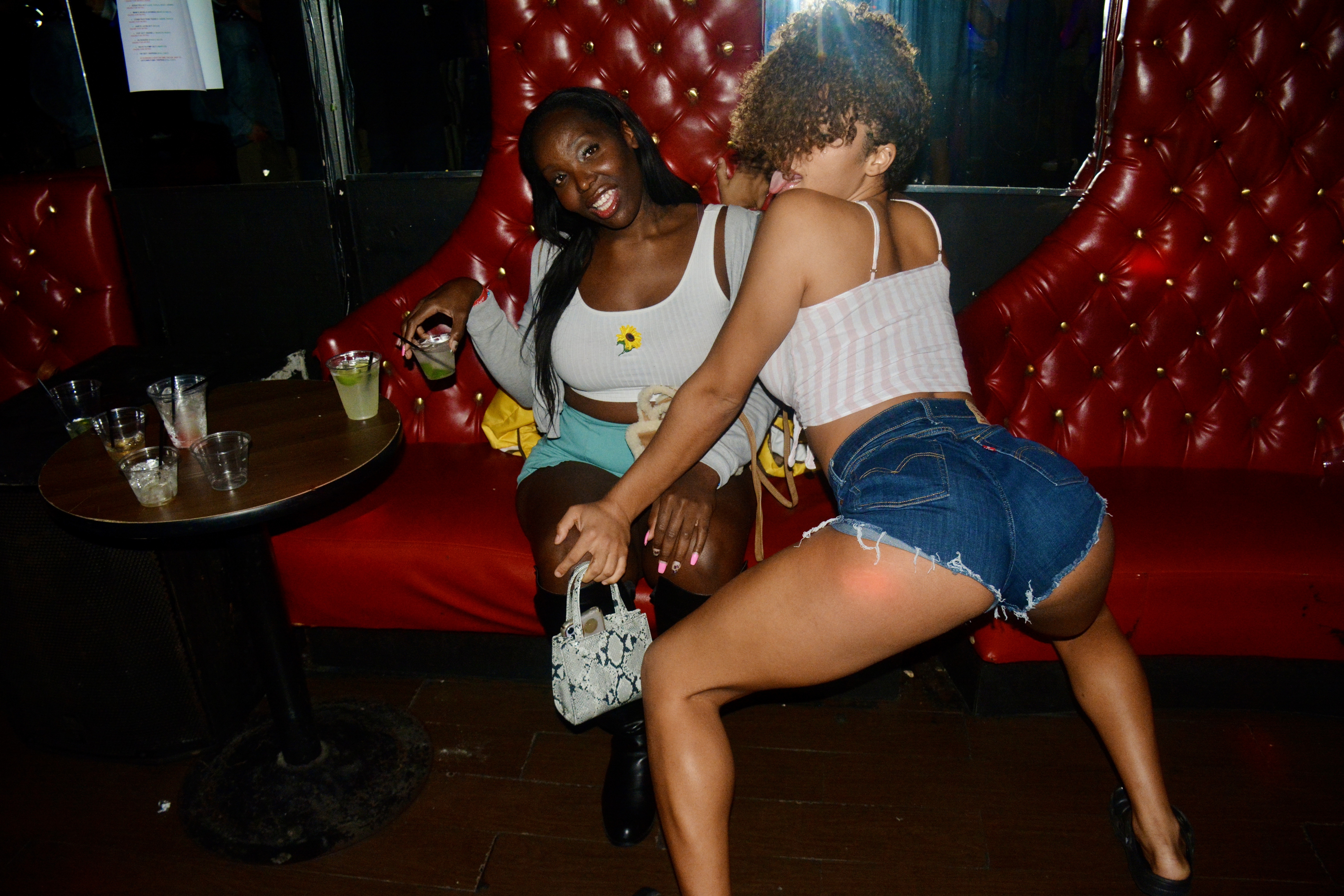
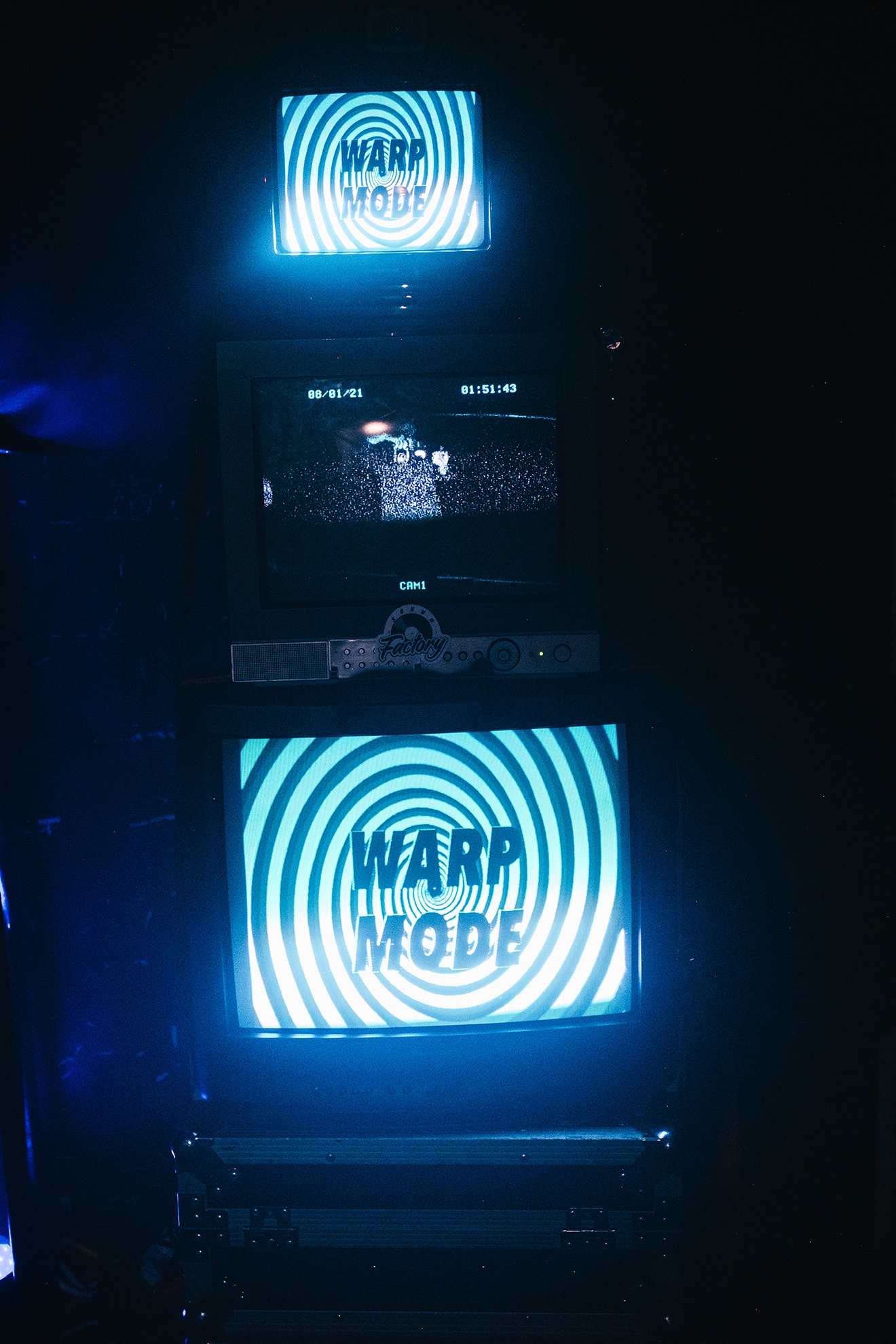
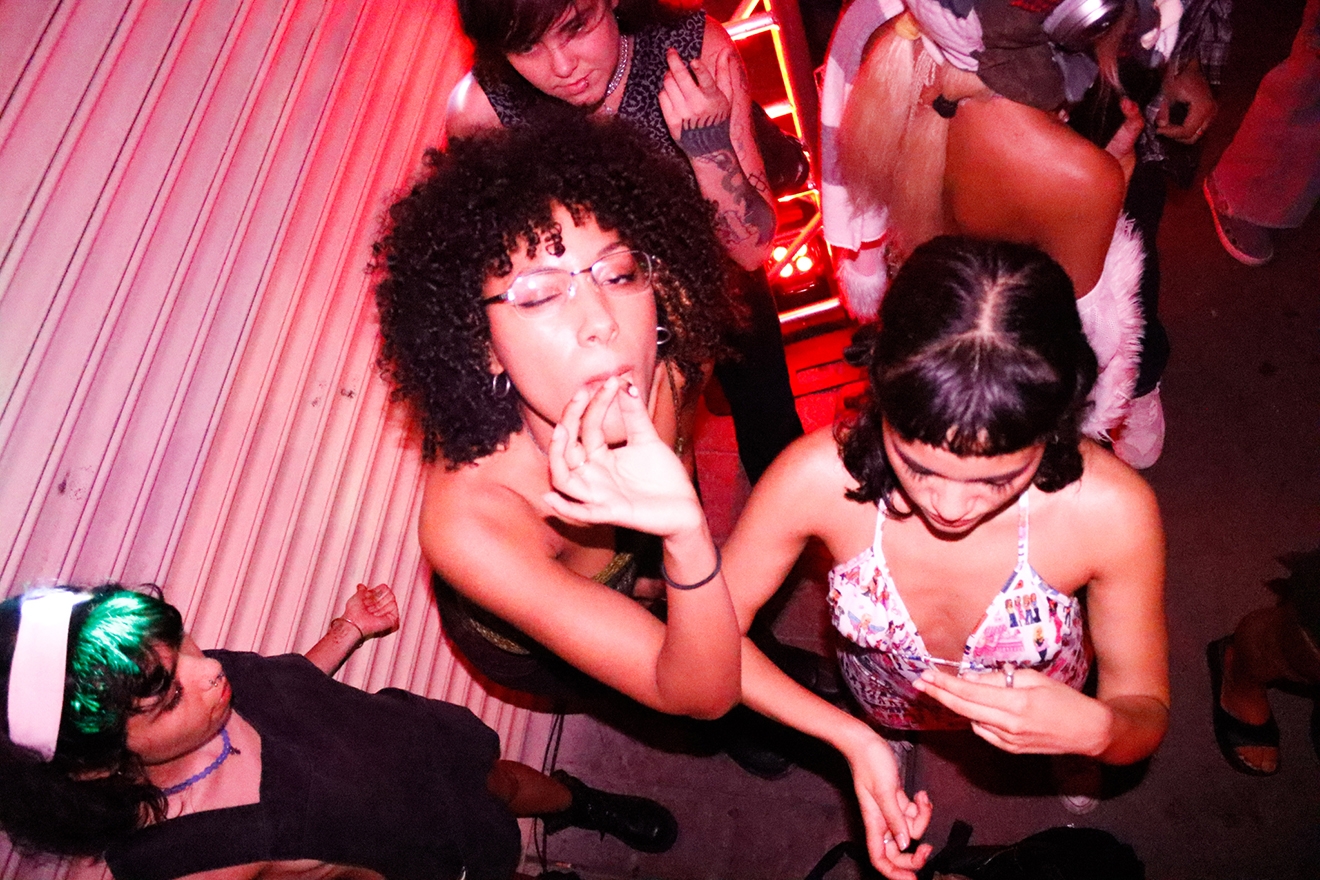
Two of the most striking new parties to emerge post-pandemic are Soul Swap and Serenity Link, both thrown by Mexican-born/LA-raised DJ/promoter Karen Galindo aka Mapamota. Serenity Link, a collaboration with Stealth Angel, aims to “bring more diverse rhythms and breaks into the fast techno space in the hopes of engaging the body on a deeper visceral level,” says Mapamota, while Soul Swap is all about a wide spectrum of bass and global club sounds from DJ guests like RP Boo, DJ Lag, and DJ SWISHA. These events have captured a new generation of party kids whose first experiences of electronic music and clubs came through internet radio, Twitch streams, video games, message boards, and online avatar raves – without the baggage and snobbery of genres, the lines are open for a musical feed where dark reggaeton, 150 BPM techno, Baltimore club, gqom, and favela rave all make sense together. Mapamota and crew’s signature home is The Alley, a literal alley in the middle of the Fashion District – at night, stalls selling knock-off designer clothes and wholesale bags shutter their metal gates, the lights of Downtown glitter in the backdrop, and this strange little corner of the city roars into rave mode.
“As I travel more, I am starting to understand what makes the LA scene specifically what it is,” says Mapamota. “I think that there are a lot of different and random elements that affect the kind of music that gets played here. For example, our clubs close at 2:AM, so that creates a very intense separation between the shows that can happen in legal clubs and bars, versus the shows that happen in private warehouses. The fact that LA is so spread out also makes for less 'bar hopping', so getting over to a warehouse party is actually a really big commitment and often a large investment of time and money for a lot of people.”
Read this next: The year of no gigs
“The pandemic really wiped out the nightlife industry in our city and everywhere,” she continues. “It felt like we were starting from scratch after going through something really traumatic together, so I think people were very careful and intentional while rebuilding these spaces. I think it has resulted in people taking care of each other in a whole new way, and in being able to more fully appreciate the moments when we do get to gather. During lockdown I had been having conversations with some of my close friends who were also trying to throw parties and build this with me. When the lockdown started to lift, we threw our first party at The Alley with our friends (which was originally chosen as a venue because it was outdoors and more pandemic friendly) and 300 people showed up! It was shocking to us! All of a sudden we had 700 people showing up at The Alley on a regular night, and it happened within a matter of weeks. I think genuine energy and passion goes a long way in this kind of work, and people could tell that we are very invested in music and that we actually care about the people that attend our parties and the artists that we book.”

For a city of 12 million people (not even counting those who drive in from the Inland Empire, Orange County and up north), central Los Angeles doesn't have many clubs that are a destination for electronic music. We can probably count them all on nearly one hand: Resident, Catch One, Catwalk, Academy, Sound, Exchange. The latter three are devoted primarily to big-room house and big-ticket EDM shows, and sometimes Latin clubs like Los Globos, La Cita, El Cid and Don Quixote will turn into a rave for the night. A handful of DJ bars like The Lash (RIP), Melody Lounge, and TeeGee keep things rolling with great local line-ups (and so-so soundsystems), but if you want to dance with the bleeding edge of the scene you're heading to a warehouse function.
“The soundsystems in Hollywood and nightclubs in general used to be atrocious back in the days,” recalls Sam of how this whole thing started. “To me, the DIY ethic of ravers building soundsystems or hiring people like Mike Shredder, Sergio Boom Boy, JBL James, ‘Sound Factory’ Auggie, and 140 Db Tré pushed the clubs to have to compete with the underground. The same still goes on today. The clubs have the money but the staff doesn’t seem to care – the underground has the passion and you can’t buy passion.”
“All our stuff is already so outsider, I don’t think it was that big of a deal that clubs closed down,” echoes Marci "Aura T-09" Pinna, who heads up the EVAR Records label and parties. EVAR’s label mission is to operate above and beyond genre labels and their parties follow suit, pairing the likes of ghettotech veteran DJ Godfather and Boston bass boss Amadeezy with local iconoclasts like Baseck, Flapjack the Kandi Kid and Wheez-ie. “It's all underground all the time here. That’s what’s so sick about LA – it's like the Wild West of raving. Our club infrastructure in LA isn't as established for this kind of music: because we are so close to the EDM industry, most of the clubs have that vibe and so they are pretty separate from the underground. It's nice to have support so definitely not knocking a good club scene. It's for sure hard to throw warehouse parties – you’re literally building a club from scratch in four hours - but the things you gain in terms of a feeling of freedom are unparalleled.”
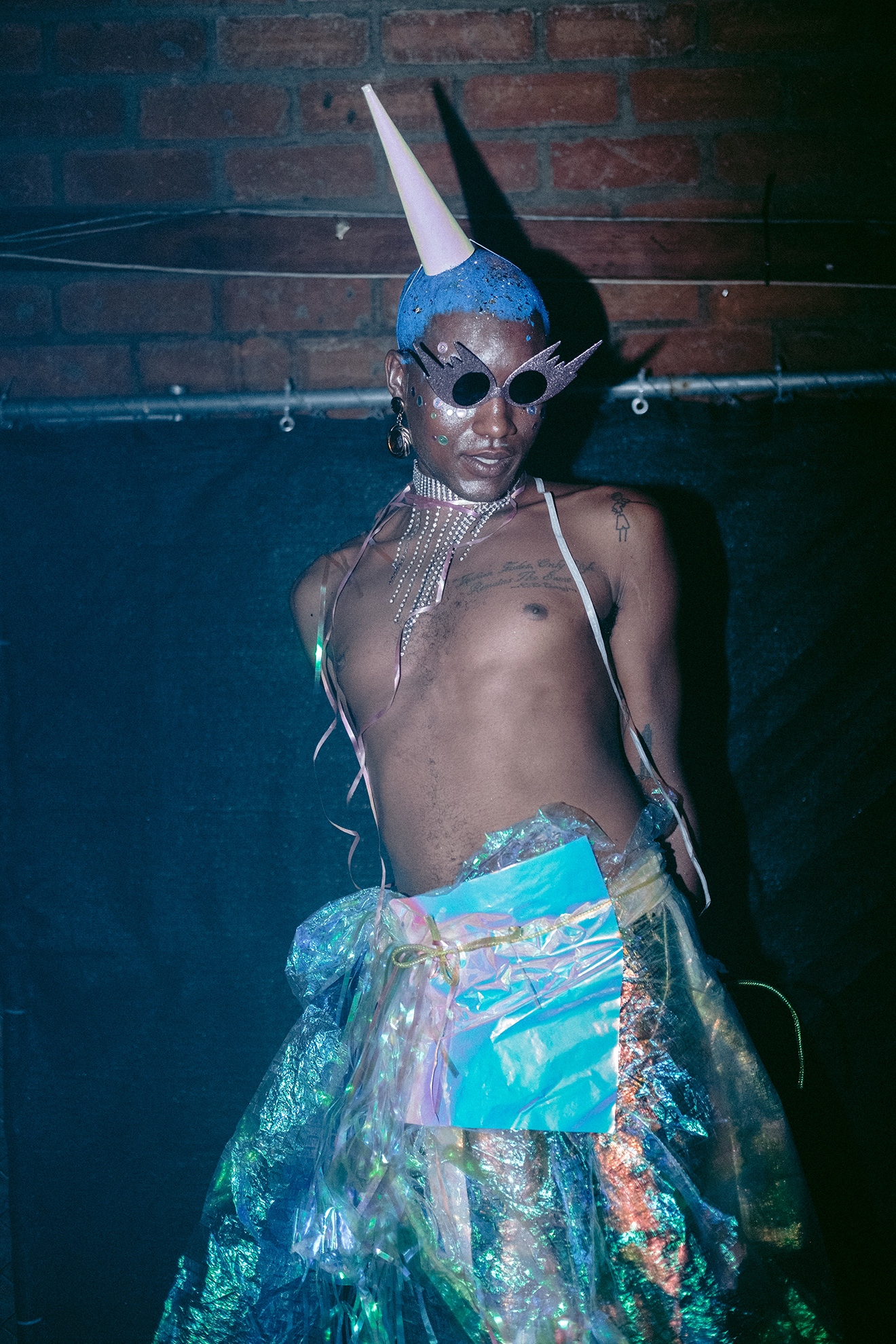
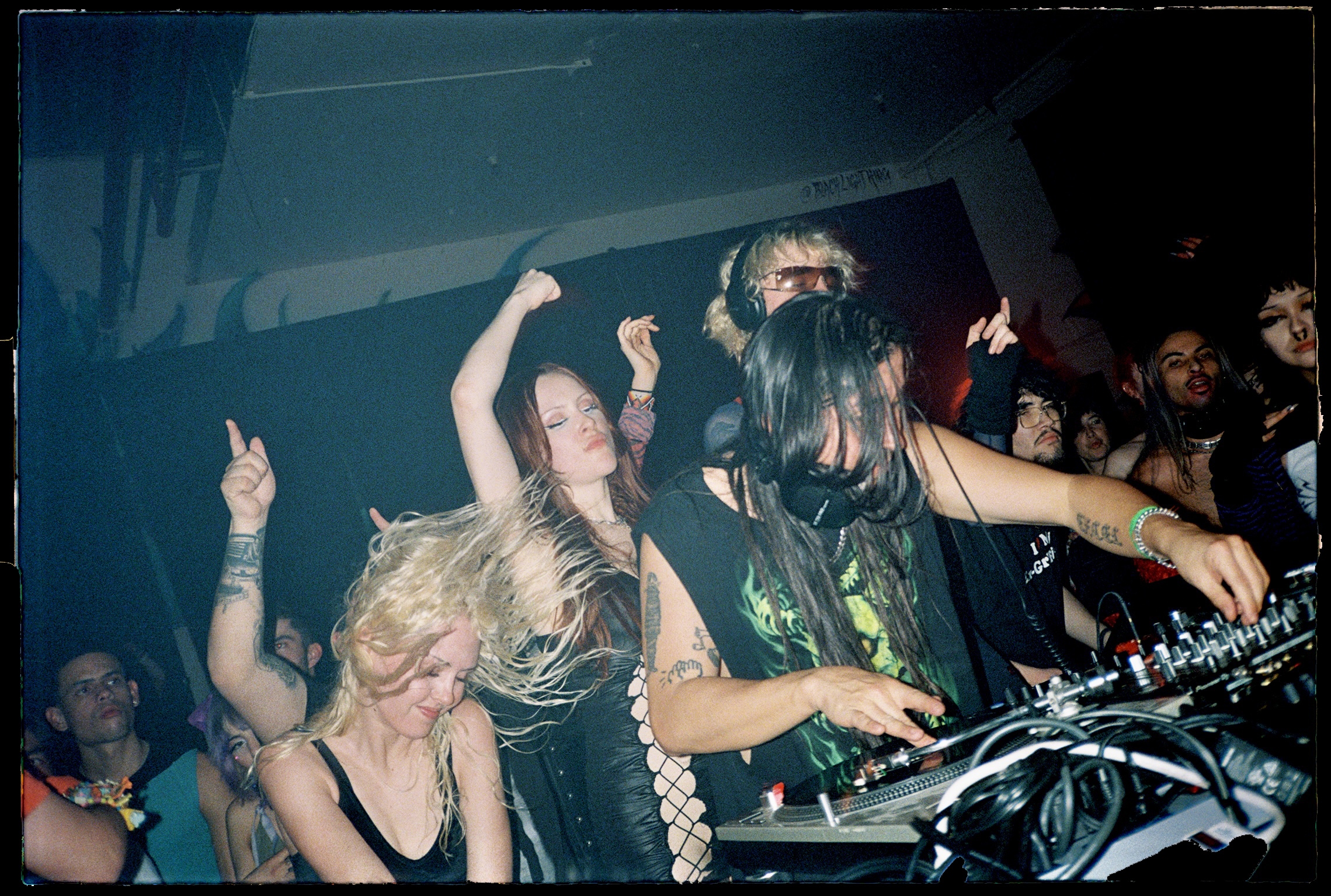
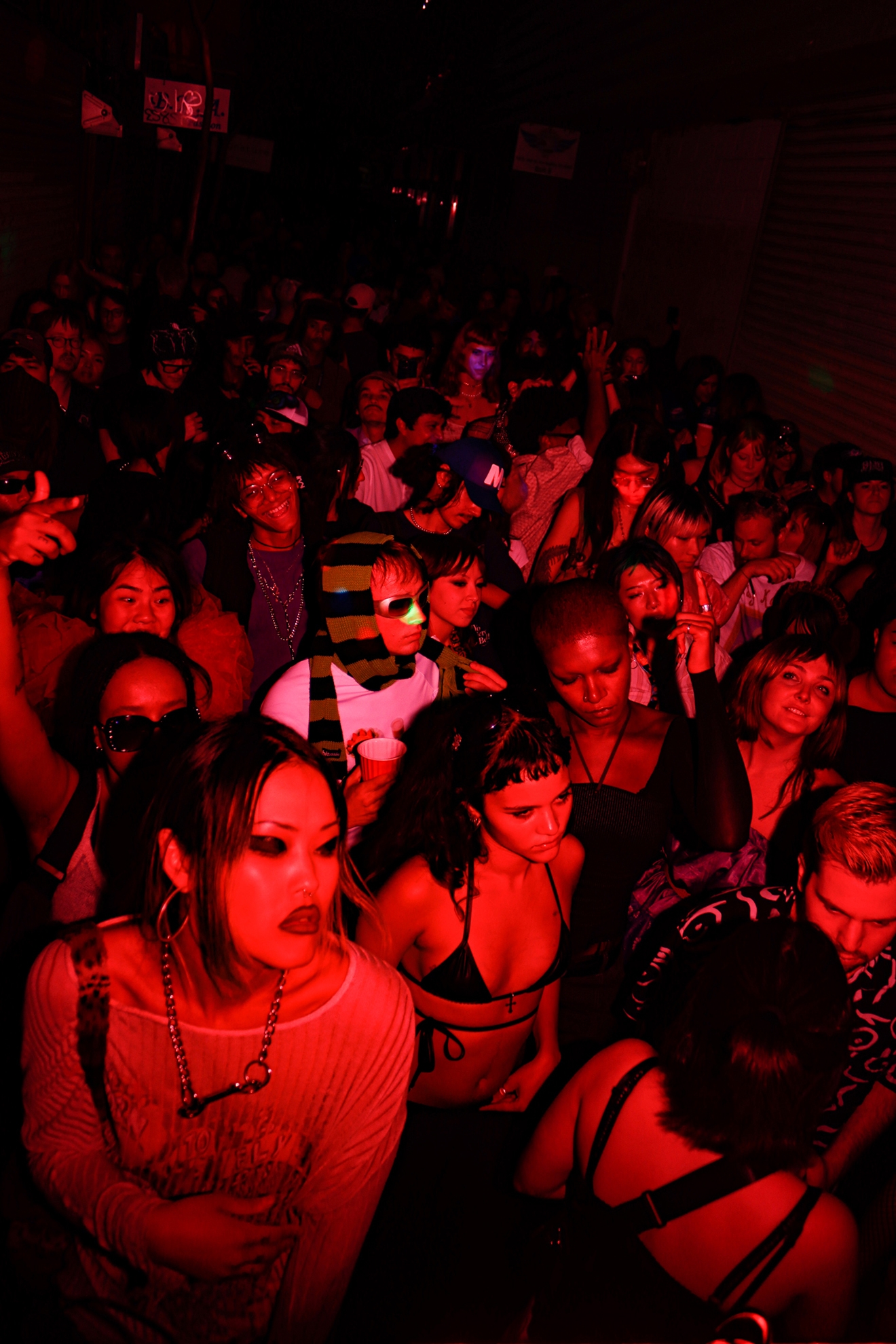
Aura T-09 got addicted to raving via renegade drum 'n' bass parties in the California mountains and eventually became embedded in LA’s breakcore scene, where she met Baseck and his Darkmatter Soundsystem crew as well as her partner in the label (and life) John ‘Trickfinger’ Frusciante. “LA traditionally has been really fractured,” says Aura. “Lots of little scenes that do specific things that rarely intermingle. It is our hope and our objective to bring a multi-genre energy to the rave space, and to unify the scene wherever we can. Every show has an arc – it's like a six-course meal that flows from electro to bass to jungle to techno to gabber. The line-ups are aimed [at] fostering a space where the different styles can coexist and feed off each other and influence new sounds, where producers and listeners of different genres can mix with each other and hear what other people are doing while still feeling like they belong there, instead of feeling like a voyeur in someone else’s scene. Kind of like a rave petri dish. We want to be the petri dish.”
They say you throw the party you want to see in the world, and it's been cool to watch young LA crews curate events catered to specific communities, while nonetheless being welcoming to all. These events in turn offer a regular training ground for up 'n' coming DJs to hone a mission statement in sound and style. Club Breach, the brainchild of queer Latinx DJs Venganza and De Miñin, is inspired by the legacy of Mustache Mondays, the decade-long queer night (2007-2018) where you could hear everything from cumbia and soul to futuristic bangers from Fade To Mind and NAAFI; run by the late Nacho Nava (RIP), Josh Peace, Danny Gonzales and Dino Dinco, Mustache nurtured the careers of artists like Total Freedom, Kelela and Nguzunguzu. Breach was born into the void created by the end of Mustache – it draws a young predominately queer Latino crowd with forward-thinking club, sassy techno and the sickest of SoundCloud remixes. Occupying a similar space but with a more hard dance edge is Toxic Haus, which mixes up perreo, 150 BPM techno, guaracha and gabber. Co-founders T3KNO and BL4ZE launched Toxic Haus during lockdown in 2020 as a Zoom party, but it emerged as an IRL rave once lockdown lifted.
Read this next: John Frusciante: “Jungle is my favourite kind of music ever”
Also beating at the intersection of queer fashion, art and music for the online age is Tunnel, started in the summer of 2021 by DJs OZA and Palma; their sound veers towards harder techno, breakbeat, and Berlin-influenced art-core, pleasing and teasing a sexy, fashion-forward crowd with headliners like Jasmine Infiniti, Bored Lord and Ariel Zetina. Also in the mix are boundary-pushing local fixtures like Sevyn, John Bryars, Bapari, and Séverine, whose own Xtended Release party keeps it weird, deep, and fabulous for the dolls with everything from electroclash to pop to hard acid. Mixing up tasty realms of fast techno and deep subs is Fast at Work, headed up by SAMWISE and Carré, who invite rising favorites like Livwutang and Black Rave Culture to their intimate, family-oriented warehouse affair. And skewing on the side of hard house, tribal, tracky techno and jack trax you'll find Gyration Station, a monthly thrown by DJ/production duo Trax Unit at The Yard, a cool queer-oriented underground space run by beloved California DJ Mr. Jenifer.
With so many exciting DJ/producers in the US right now, newer LA parties have a lot of special guests to choose from; UNIIQU3, DJ SWISHA, Leonce, Jubilee, Bapari, AceMo, Kush Jones, and Nikki Nair are among the many North American-based talents that regularly come through. Many up 'n' coming parties are not locking themselves into the traditional model of paying exorbitant headlining DJ fees and flight shares, proving you can have an insane, packed night with local guests and good curation.
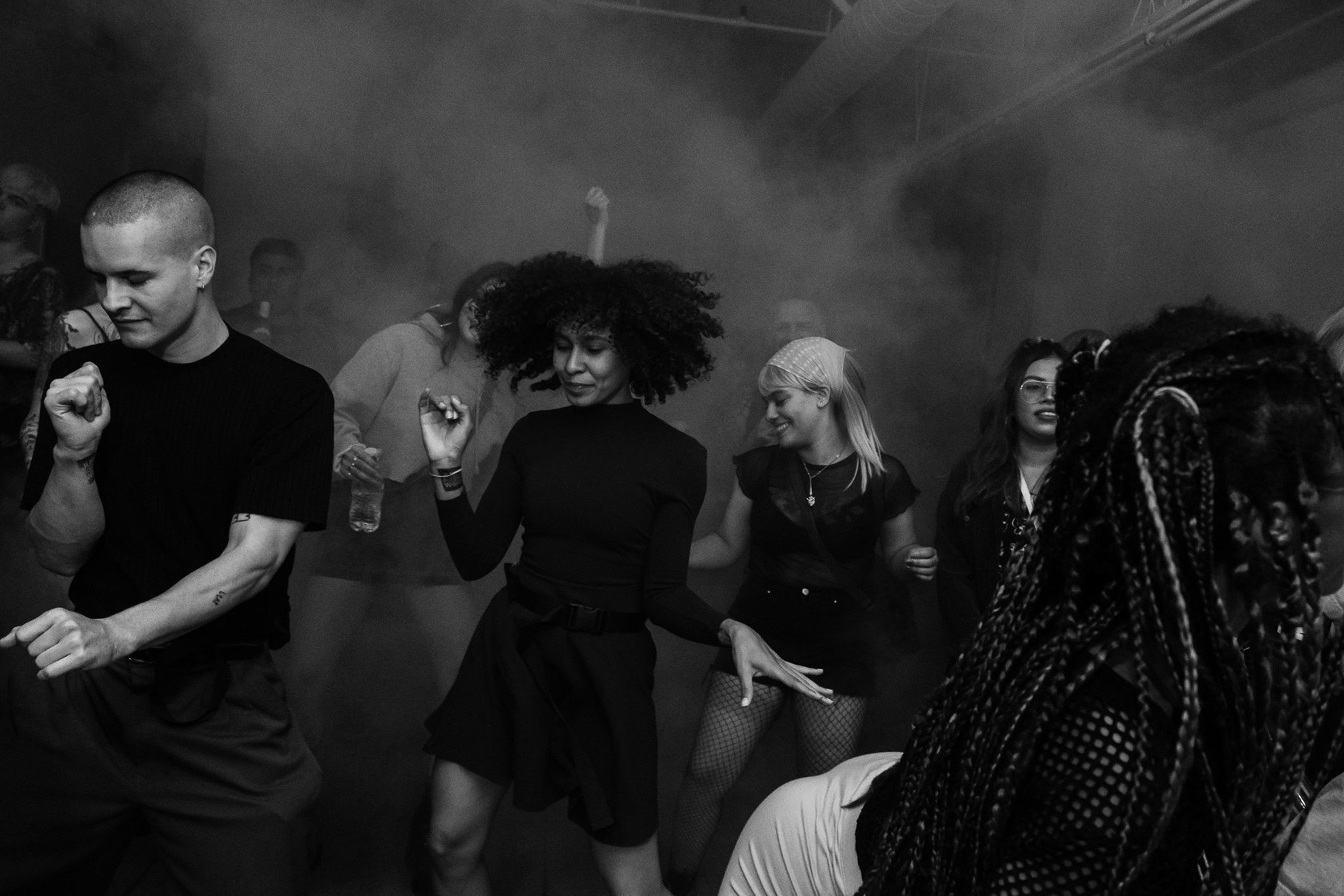
Although they had been carrying before COVID hit, new crowds of partygoers have brought a rush of energy and enthusiasm to events that were already pushing a radical agenda. BAE BAE and DJ Kita's lit Hood Rave event debuted in February 2020 at Earl's Barbershop in South Central Los Angeles, an effort to give the Black queer underground in LA somewhere to party (and a place for BAE BAE's DJ friends like Crystallmess, cry$cross, Half Queen, and River Moon to play). The music is all over the map from hip hop and R&B remixes and cunty ballroom and Bmore club trax to jungle, Jersey club, and hard techno – the crowd vibes to it all. Moving across town, Bianca Maeli, MTooray, Omar ؏, and DJ Sudi's No Nazar party opens up the same space for a more South Asian crowd, mixing Desi beats with global club sounds like Afrobeats and baile funk. And you can't miss Foreigner, who has been at the forefront of creating a club community for the Caribbean and African diaspora on the West Coast for several years now. From amapiano nights to motorsport-themed dancehall bashes to bringing the traditional Trini paint party jouvert to Southern Cali with his Junkyard Jouvert event, Foreigner has stuck to his guns and grown once-cult gatherings into certified bashment ragers.
While the post-pandemic time has allowed space (and spaces) for newer promoters to make an impression on LA nightlife, the fresh energy is also benefiting those who've been grinding at their craft faithfully for years. The Juke Bounce Werk crew, formed in LA in 2013, has seen massive growth and accolades over the last two years, for their comprehensive ‘JBDUBZ’ compilation series and the deep DJ and production talents of crew members like DJ SWISHA, Kush Jones, Elise, and founders DJ Noir, Jae Drago and Sonic D. The latter three conceived JBW during a conversation on the patio at long-running drum 'n 'bass night Respect, which celebrates its 24th birthday this year. As Respect has become the home in LA for drum 'n' bass, JBW set out to become the outpost for all things footwork and 160 BPM adjacent on the West Coast.
Read this next: Chicago footwork legacy: DJ Clent, DJ Corey & DJ Noir in conversation
“We really went hard with JBW during the Soundcloud boom between 2014 and 2017 with our weekly mix series and also the JBDUBZ compilation series,” recalls Noir. “JBW shifted focus to being a platform to showcase a wider scope of bass music and connect with people around the world. During the pandemic, it was pretty seamless to transition to focusing solely online because we had already been doing that and so much of our original community was fostered there. We never stopped working during COVID. We did routine Twitch streams, made music and mixes constantly. Having that captive audience for an entire year set us up for great opportunities once the world opened up again. We are grateful that people see and acknowledge the work and that we have had the opportunity to share our platform for others to gain visibility too.”

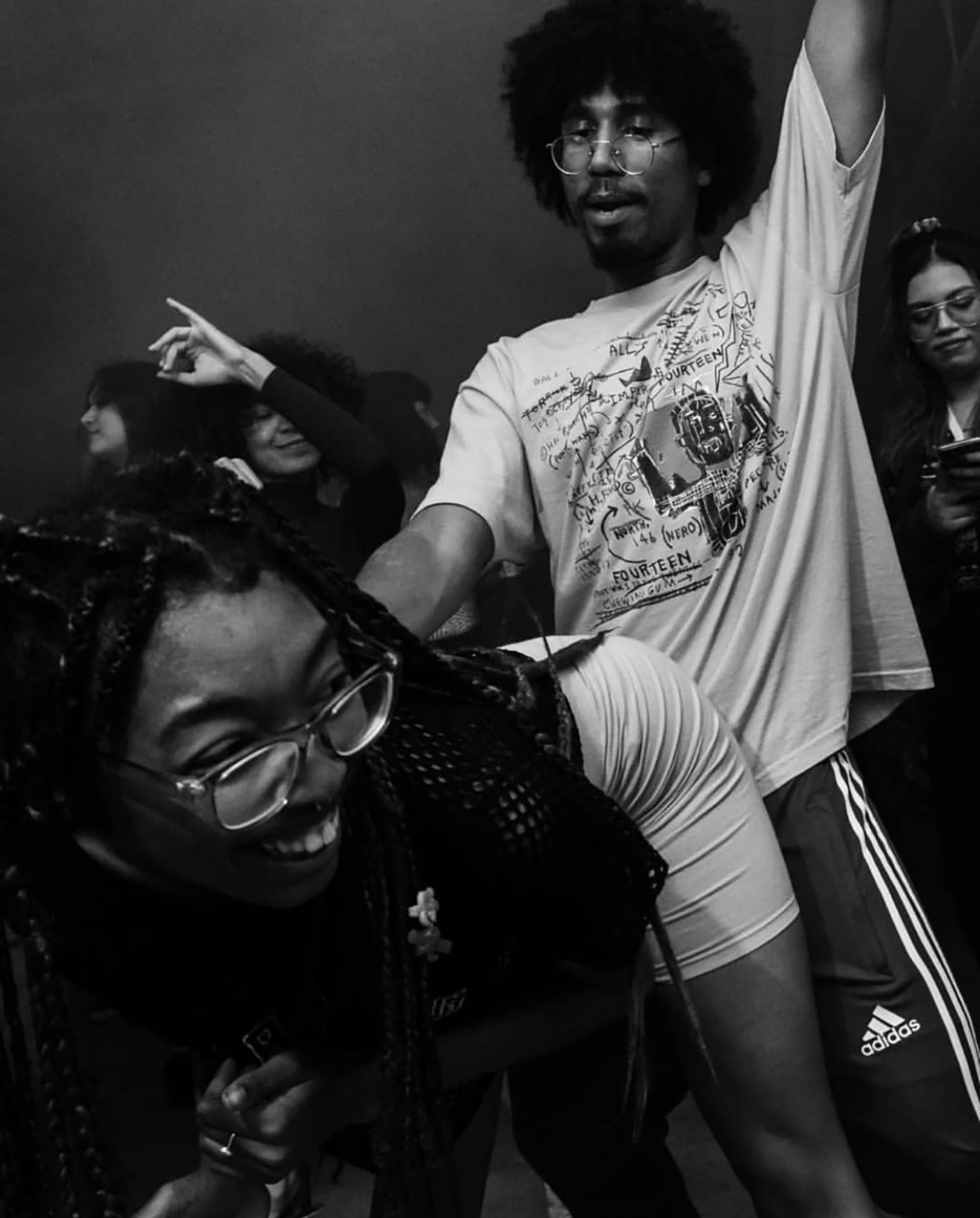
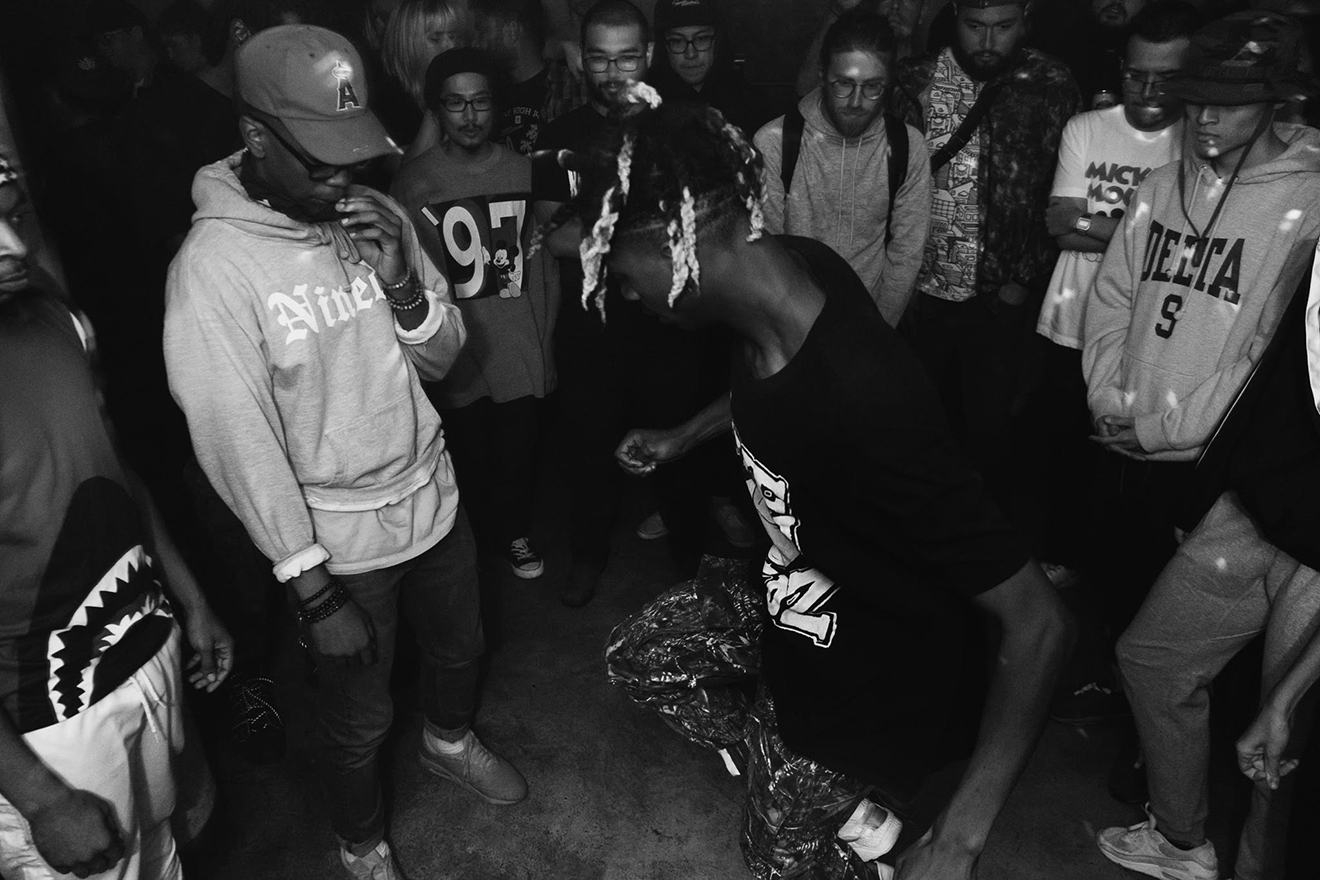
While they don’t currently have a regular night, JBW crew members – particularly Noir – can be seen dropping future-forward sets around town nearly every weekend, from low-end explicit parties like Big Booty Bass to Heidi Lawden and Lovefingers' ESP Institute, which has slowly inched from house and techno-leaning special guests like Powder and Roman Flügel towards more turbo-charged bass lovers like SHERELLE, Nikki Nair and LCY. In fact, a number of well-established underground parties that have helped lay the groundwork for this scene like Lights Down Low, A Club Called Rhonda, and Into the Woods have been branching out into the bassier, breaksier realms of dance music in the last year, with headliners like Goldie, Skream, Special Request, Amadeezy and Pearson Sound.
“Hardcore. Breakbeat. Jungle. That is our foundation in underground club culture in Los Angeles,” says Noir, a veteran raver. “The East Coast [of the US] has a very robust ‘club culture’ but LA is definitely more on the warehouse/underground DIY vibe. We have some unique spaces here and we will literally just pitch up the system under the freeway or on the beach if necessary. Obviously, the biggest change between the '90s and now is social media and access. We came from the map point and street team promotion era. The way events are promoted and the creativity that goes into JUST promoting the party, not even the party itself, is amazing. The music has evolved beyond what I could have ever imagined. I think the most important change is the amount of women producers and DJs there are now. I really think I could have counted them on two hands when I started.”
In Noir's view, LA nightlife has come back healthier than ever after the pandemic. “People are more mindful of creating safer spaces, more inclusivity and just better curated events with lots of variety in sound and new talent making moves. We've probably been out more in the last year than we had in the previous three years because there are so many great events happening large and small. Diversity is the most positive change we've seen. It's really noticeable.”
Just when you wonder if this feeling is going to taper off, new events keep adding to the flavor and established scene veterans gain new energy to get back in the promotion mix. Mix engineer guru Daddy Kev – an architect of the California beat scene through his long-running Low End Theory night – recently launched a weekly Wednesday free party called Scenario, held at the intimate Love Song Bar downtown. The night has quickly become a gathering place for various tendrils of the beats n bass scene. Veteran LA junglists R.A.W. and CRS? are getting back in the warehouse game this spring with their series of Jungle 2023 warehouse parties. And out in Long Beach, about an hour's drive South, a new scene is cropping up around GRN+GLD, headed up by Shaine and Dirty Merlin.
“There is a dominating energy of sharing and caring that is happening right now and I love it,” says Aura T-09. “And even though I would argue that more women in organizational power positions is the driving force behind the vibe shift, it's 100% spreading to everyone and it's much less competitive overall than it used to be. It's almost like LA is getting together and saying let's all join forces and show the world what we're about and how we roll.” Come through!
Vivian Host (aka Star Eyes) & Bianca Oblivion are DJs, producers, broadcasters, journalists and co-founders of Warp Mode (alongside AK Sports). Follow Warp Mode on Instagram @warp_mode_
Forthcoming parties are April 7 at The Yard (LA) with INVT, April 8 at Paragon Broadway (NYC) with UNIIQU3 and DJ SWISHA, and April 29 at The Alley with Amor Satyr, Siu Mata, and a secret guest. Look out for Bianca Oblivion’s new club single on NAAFI April 28, with fellow LA producer ONHELL


